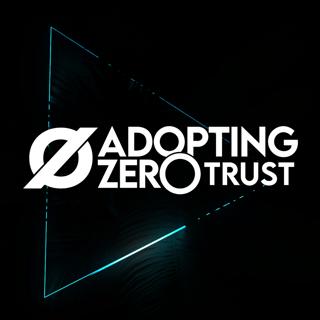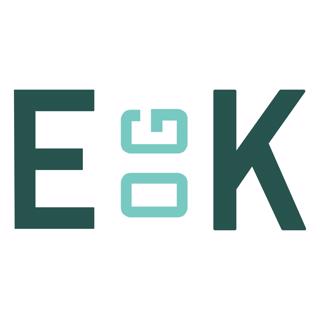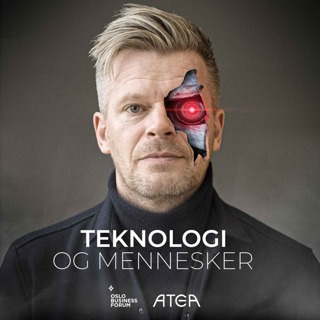
GRC tool or spreadsheets, that is the question | GRC Uncensored Preview
In our final preview episode of GRC Uncensored, we explore a particularly bipolar debate: do you need a GRC tool to manage compliance, or will spreadsheets suffice? After this, we will be back to our regularly produced AZT episodes. The last episodes of our pilot for GRC Uncensored can be found on your favorite podcast app or newsletter on Substack.
24 Okt 202443min

Podcast Preview: GRC Uncensored and the commoditization of compliance
We are interrupting our regularly scheduled podcast series to introduce you to a new series we developed: GRC Uncensored. This pilot season will elevate conversations about GRC that are often buried under millions of dollars in marketing spend. No boring talks about controls or frameworks, just unfiltered discussions with auditors and practitioners in the GRC space. We'll be back to our regular AZT episodes in a couple of weeks. ----- In the first episode of 'GRC Uncensored,' hosts Troy Fine, dubbed the 'GRC Meme King,' and Elliot Volkman, alongside guest Kendra Cooley dive into the complexities of Governance, Risk, and Compliance (GRC) in cybersecurity. The discussion unravels the 'love-hate' relationship many security professionals have with compliance frameworks like SOC 2, exploring how they have become commoditized and possibly devalued over time. The conversation touches upon the challenges security practitioners face in conveying the true value of GRC to businesses, the potential pitfalls of 'SOC in a box' offerings, and the broader implications of compliance becoming a 'check the box' exercise. Moreover, the episode delves into the broader regulatory landscape and the ongoing debates about the role of government regulations in cybersecurity compliance. This candid dialogue sets the stage for future episodes that promise further to dissect the nuances of cybersecurity audits and standards. 00:00 Welcome to GRC Uncensored 01:34 Introducing Kendra Cooley 02:05 Love-Hate Relationship with GRC 03:16 The SOC 2 Debate 04:33 Challenges with SOC 2 Audits 09:10 The Value of SOC 2 in the Industry 12:04 The Evolution of Compliance Frameworks 20:39 False Sense of Security in Compliance 24:46 The Buzz Around AI and Quantum 25:10 Staying Updated as a Security Professional 26:45 Challenges in Penetration Testing and Vendor Assessments 27:37 Compliance and Its Impact on Security 30:10 Government Regulations and Their Effectiveness 32:23 The Complexity of Privacy Laws 38:29 The Role of GRC Teams in Risk Management 42:30 Concluding Thoughts and Future Episodes
10 Okt 202441min

How to prepare your operations team for Zero Trust
Welcome back to Adopting Zero Trust! In this episode, hosts Elliot Volkman and Neal Dennis are joined by Rob Allen, Chief Product Officer of ThreatLocker, to dive deep into the operationalization of Zero Trust. Despite covering various aspects over three seasons, this crucial topic is addressed thoroughly. They explore pre-adoption preparation, aligning organizational actions, and the importance of education in security. Additionally, the conversation highlights the 'assume breach' perspective and how concepts like default deny and least privilege are essential. With real-world examples and anecdotes, they provide actionable insights on implementing Zero Trust strategies effectively. Tune in to learn about the foundational steps necessary to transition into a Zero Trust environment. This is the first of a three-part mini-series, so stay tuned as we explore more aspects of how to prepare your organization for adopting a Zero Trust strategy.
26 Sep 202446min

Log4j Continues to act as Organizational Vulnerability
Season 3, Episode 13: Cato Network’s Etay Maor provides fresh research on the abuse of unpatched log4j libraries. Catch this episode on YouTube, Apple, Spotify, or Amazon. You can read the show notes here. This week on Adopting Zero Trust (AZT), we highlight a significant cybersecurity risk focused on the notorious Log4j vulnerability and the growing concern around shadow IT. Featuring expert insights from Etay Maor, the Chief Cybersecurity Strategist at Cato Networks, the conversation initially looks into the persistent exploitation methods, the importance of knowing one’s cybersecurity environment, and strategic approaches to mitigating risks.
5 Sep 202447min

Overturning of Chevron Deference’s Impact on Cybersecurity Regulation
Season 3, Episode 12: Could the overturning of Chevron Deference impact cybersecurity and privacy regulations? Catch this episode on YouTube, Apple, Spotify, or Amazon. You can read the show notes here. Welcome back to Adopting Zero Trust or AZT. In our latest episode, we assembled a distinguished panel to dig into a timely topic affecting the cybersecurity landscape but has the fog of war wrapped around it. Today’s conversation centered around the recent developments in cybersecurity regulations and their potential impacts, ignited by the Supreme Court overturning Chevron Deference. This, of course, has other potential impacts on all regulation types enforced and shaped by federal agencies, but our focus is, of course, on cybersecurity, privacy, and AI. The Panel We welcome back Ilona Cohen, Chief Legal and Policy Officer at HackerOne, who joined us last year to discuss the National Cybersecurity Strategy. Ilona is also the former General Counsel for OMB. We are also joined by the GRC meme king, Troy Fine, the Director of SOC and ISO Assurance Services at Gills Norton. Beyond the memes, Troy takes a practical perspective on regulations and acts as our voice for those who may be most immediately impacted. Key Takeaways Chevron Deference overturned: The Supreme Court's decision removes the requirement for courts to defer to federal agencies' interpretations of ambiguous statutes and now relies on the courts. Increased regulatory uncertainty: This ruling may lead to more challenges to existing and future regulations, potentially affecting cybersecurity and AI policies. State vs. Federal regulation: The uncertainty at the federal level might prompt states to act more quickly on issues like AI and cybersecurity, potentially creating a patchwork of regulations. Impact on AI regulation: With about 40 federal bills addressing AI in the pipeline, the ruling could complicate the process of creating comprehensive federal AI regulations. Cybersecurity implications: Existing and proposed cybersecurity regulations, such as the Cyber Incident Reporting for Critical Infrastructure Act, may face new challenges. Business concerns: While some business organizations applauded the ruling, the resulting regulatory uncertainty could be problematic for companies trying to plan and comply with regulations. Expertise concerns: There are worries that courts may lack the technical expertise to make decisions on complex technological issues like AI without deferring to agency experts. Potential for innovation: The regulatory uncertainty might create a wild west period for AI, potentially fostering innovation before more stringent regulations are imposed. Self-regulation importance: In the absence of clear federal regulations, industry self-regulation initiatives may become more significant, especially in rapidly evolving fields like AI.
20 Aug 202451min

Applying Vulnerability Management to Zero Trust
Season 3, Episode 11: Vulnerability management is critical to any Zero Trust strategy, but you probably already know that. Fortra’s Tyler Reguly breaks down severity vs. risk. Catch this episode on YouTube, Apple, Spotify, or Amazon. You can read the show notes here. Every organization relies on some form of technology to run, and each tool you add increases the risk of vulnerabilities causing problems. If you don’t stay on top of patching, you increase the odds of a bad actor finding their way more easily within your network. This week, we chat with Tyler Reguly, a senior manager of security research at Fortra, who shares insights from his 18 years in vulnerability management. Tyler discusses the importance of staying on top of patching to maintain a Zero Trust strategy, the differences between vulnerability and patch management, and emphasizes that the Common Vulnerability Scoring System (CVSS) measures severity, not risk. We also briefly nerd out about the significance of groups like the Canadian Cyber Threat Exchange (CCTX) for knowledge sharing and collaboration in cybersecurity. And then, we wrap things up by exploring the efficacy of existing security policies and benchmarks, such as CIS and DISA STIGs, and the role of vendor relationships in maintaining effective security practices.
1 Aug 202445min

The Unstoppable Phish: A Discussion with Vivek Ramachandran
Season 3, Episode 10: Elliot chat’s with Vivek Ramachandran of SquareX about his approach to tackling the impossible: Social engineering. Catch this episode on YouTube, Apple, Spotify, Amazon, or Google. You can read the show notes here. For nearly three decades, social engineering, particularly phishing, has been one of the most impactful and financially draining cyber threats. Between security awareness training, email security gateways, generative AI, enterprise browsers, and a slew of other tech like EDRs and XDRs, social engineering has yet to be thoroughly thwarted. The reason for that is straightforward enough: social engineering is a psychological threat, not just a technological one. In our last round of interviews from RSA, we chatted with Vivek Ramachandran, the founder of SquareX, who is attempting to tackle the challenge. Vivek also walks us through a more realistic perspective of how threat actors use generative AI today, which goes beyond the more unique what-if scenarios we’ve seen in headlines in the past two years. Key Takeaways Social engineering and phishing attacks remain a significant threat, and everyone can be a target. The sophistication of these attacks has increased due to advances in AI. AI can craft messages that sound remarkably like someone the recipient knows, enabling rapid scalability. Social media platforms are becoming common channels for launching phishing attacks. Attackers exploit the trust that users place in these platforms and their contacts. Vivek Ramachandran's company, SquareX, deploys a browser extension that can attribute attacks and detect and block them in real-time, providing valuable information to the enterprise. Traditional technologies like Secure Web Gateways (SWG) have matured, and attackers can easily bypass them. Enterprise browsers solve the problem for a small niche group of websites but have adoption friction due to the inconvenience of having a dedicated browser.
2 Jul 202426min





















